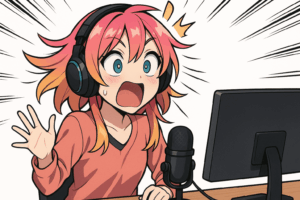The indie game movement has revolutionized the way we perceive and engage with video games. Unlike big-budget AAA titles, indie games are often developed by small teams or even individual indie game makers. These indie game developers focus on innovation, creativity, and unique gameplay experiences, rather than relying on large-scale productions. This grassroots approach to game development has led to a diverse array of games that offer fresh and often unconventional experiences, making the indie game scene a vibrant and essential part of the gaming world.
Importance of Indie Game Developers in the Video Game Industry
Indie developers play a crucial role in the video game industry. They bring new ideas, experiment with different genres, and push the boundaries of what games can be. Unlike large studios, indie developers can take risks and innovate without the pressure of satisfying a massive audience or adhering to strict commercial constraints. This freedom allows them to create video games that are not only entertaining but also thought-provoking and artistically rich. Their contributions ensure that the video game industry remains dynamic and continuously evolving, providing players with a wide variety of experiences that might otherwise be overlooked by mainstream developers.
The Evolution of Indie Game Development
Early Days of Indie Games
The early days of indie games were marked by the efforts of passionate individuals and small teams who sought to create unique gaming experiences. Some of the first examples of indie games that gained significant attention include Cave Story and Super Meat Boy. Cave Story, developed by Daisuke “Pixel” Amaya, is a classic example of a game that combined engaging gameplay with a compelling narrative, all created by a single developer. Super Meat Boy, developed by Team Meat, showcased the potential of indie games to deliver challenging and rewarding experiences, gaining a large following and critical acclaim.
The journey of indie game development is filled with key moments and milestones that have shaped the industry. The introduction of early access programs allowed developers to involve players in the development process, receiving feedback and making iterative improvements. Digital distribution platforms, such as Steam, revolutionized the way indie games were published and accessed, eliminating the need for physical copies and allowing developers to reach a global audience. These innovations paved the way for indie game development to flourish, setting the stage for future growth and success.
Growth and Recognition
The rise of digital storefronts has had a profound impact on indie game development. Platforms like Steam, Itch.io, and the Epic Games Store have made it easier than ever for indie developers to distribute their games to a wide audience. The ease of digital distribution has democratized game development, allowing anyone with a creative idea and the necessary skills to bring their game to market. This shift has not only increased the visibility of indie games but also provided developers with a viable way to achieve commercial success.
Over the years, several indie titles have achieved significant commercial success, proving that games developed by small teams can compete with and even surpass AAA titles. Some of the most successful indie games include Minecraft, Stardew Valley, and Undertale. These games have sold millions of copies and garnered massive fanbases. Their success stories highlight the potential for indie games to achieve both critical and commercial acclaim, encouraging more developers to enter the indie game scene and pursue their creative visions.
Key Players in the Indie Game Scene
Influential Indie Game Studios
The indie game scene is home to numerous studios that have made a significant impact with their innovative and successful games. Notable indie game studios include Supergiant Games, known for titles like Bastion and Hades; Extremely OK Games, creators of the acclaimed Celeste; and Hello Games, the studio behind No Man’s Sky. These studios and other games have demonstrated that small teams can produce high-quality, successful games that resonate with players worldwide. Their success stories inspire other indie studios to pursue their unique visions and contribute to the diversity of the indie game landscape.
Extremely OK Games, formerly known as Matt Makes Games, gained widespread recognition with the release of Celeste. This game was praised for its tight platforming mechanics, emotional storytelling, and inclusive themes. Supergiant Games has consistently delivered high-quality games with Bastion, Transistor, Pyre, and Hades, each showcasing unique gameplay and artistic styles. Hello Games, despite initial setbacks with No Man’s Sky, has redeemed itself through continuous updates and improvements, turning the game into a beloved title. Other influential studios include Capybara Games, known for Superbrothers: Sword & Sworcery EP, and Annapurna Interactive, a publisher that has supported numerous indie hits.
Prominent Indie Developers
The indie game industry is driven by the creativity and passion of individual developers who have left a lasting impact with their innovative games. Greg Kasavin, the writer and designer at Supergiant Games, has played a pivotal role in shaping many games of the studio’s acclaimed titles. His work on games like Hades has been lauded for its narrative depth and engaging gameplay. Other notable developers include Toby Fox, the creator of Undertale, and Eric Barone, known for developing Stardew Valley entirely on his own. These developers exemplify the talent and dedication found within the indie game community.
The success stories of individual indie developers serve as inspiration for aspiring creators. Eric Barone, also known as ConcernedApe, developed Stardew Valley over several years, handling every aspect of the game from coding to art. The game became a massive hit, selling millions of copies and earning widespread acclaim. Toby Fox’s Undertale is another indie developer with a remarkable success story; his unique approach to game design and storytelling captured the hearts of players worldwide. These stories of success demonstrate that with passion, perseverance, and creativity, indie developers can achieve extraordinary success and make a significant impact on the video game industry.
The Development Process: From Concept to Release
Initial Stages and Conceptualization
The development process for an indie game typically begins with the ideation and conceptualization stages. During this phase, game developers brainstorm ideas and determine the core concept of their game. This involves deciding on the genre, gameplay mechanics, and overall vision. For many indie developers, creating their first game is a significant milestone. They often draw inspiration from various sources, including personal interests and experiences. For instance, a developer might choose a puzzle-solving genre because they enjoy intellectually stimulating challenges. The goal is to develop a unique concept that stands out in the crowded game development landscape.
In the highly competitive world of indie game development, engaging gameplay and unique concepts are crucial for success. Indie developers prioritize creating experiences that captivate players and offer something different from mainstream titles. Engaging gameplay is achieved through innovative mechanics, compelling narratives, and well-designed levels. Fun is a key component, ensuring that players remain interested and invested in the game. Unique concepts, such as unconventional storytelling methods or novel gameplay mechanics, can differentiate an indie studio or game from others, attracting a dedicated fanbase and positive reviews.

Development and Challenges
Indie game development often involves small teams or even solo developers, which presents a unique set of challenges. Limited resources and manpower mean that each team member must wear multiple hats, handling various aspects of development, from coding and art design to marketing and testing. These constraints can lead to longer development times and the need for meticulous planning. Small teams must also navigate the complexities of game development, such as debugging, optimizing performance, and ensuring a smooth player experience. Despite these challenges, the passion and dedication of the best indie game developers drive them to overcome obstacles and bring their visions to life.
Funding is a critical factor in the success of indie game development. Indie developers often rely on a mix of personal savings, crowdfunding, and support from indie publishers. Indie publishers play a vital role in providing financial backing, marketing support, and distribution channels. Companies like Devolver Digital and Annapurna Interactive have built reputations for supporting innovative indie projects. These publishers help bridge the gap between indie developers and their audience, offering resources and expertise that can significantly enhance the development process. Securing funding and an indie publisher with support can alleviate some of the financial pressures and allow developers to focus more on the creative aspects of their games.
Platforms and Distribution
The distribution of indie games across various platforms has been instrumental in their widespread success. Popular platforms for indie games include the Nintendo Switch, Xbox, PC, and mobile platforms. The Nintendo Switch, in particular, has become a favorite among indie developers due to its portability and growing user base. Xbox offers robust support for indie games through initiatives like [email protected], while PC platforms such as Steam provide extensive reach and community engagement. Mobile platforms also offer a significant opportunity for indie developers to reach a vast audience, especially with the rise of mobile gaming.
Digital storefronts have revolutionized the way indie games are distributed and accessed. Platforms like Epic Games Store, Steam, and Itch.io have made it easier for indie developers to publish their games and reach a global audience. Epic Games, for instance, offers favorable revenue splits and promotional opportunities, attracting many indie developers. These digital storefronts provide a platform for showcasing indie games, facilitating easier downloads, and offering community features like forums and reviews. The accessibility and convenience of the digital storefront and distribution have significantly contributed to the growth and success of the indie game industry.
Success Stories: Games that Defined the Indie Scene
The indie game scene has produced numerous successful titles that have left a lasting impact on the gaming industry. Successful indie games often combine innovative gameplay, compelling stories, and unique art styles to create memorable experiences. These games have not only achieved commercial success but most games have also garnered critical acclaim and a dedicated fanbase. By focusing on creativity and originality, these titles have set a high standard for what indie games can achieve, inspiring other developers to push the boundaries of game design.
Analysis of Titles Like Shovel Knight, Stardew Valley, and Outer Wilds
Shovel Knight: Developed by Yacht Club Games, Shovel Knight is their first title, a retro-inspired platformer that combines tight gameplay mechanics with nostalgic 8-bit graphics. It successfully raised funds through Kickstarter and has since become a beloved title, praised for its challenging levels and charming aesthetic.
Stardew Valley: Created by developer Eric Barone, also known as ConcernedApe, Stardew Valley is a farming simulation game that offers players a relaxing yet engaging experience. The game’s deep mechanics, such as farming, fishing, and social interactions, coupled with its charming pixel art, have made it a commercial and critical success, selling millions of copies worldwide.
Outer Wilds: Developed by Mobius Digital and published by Annapurna Interactive, Outer Wilds is an exploration-based adventure game set in a mysterious solar system. Its unique narrative structure and innovative gameplay, which involves solving puzzles and uncovering secrets across different planets, have earned the team behind it widespread acclaim and numerous awards.
Case Study of Narrative-Driven Game
Hello Games: The development and subsequent evolution of No Man’s Sky by Hello Games is a remarkable case study in resilience and dedication. Initially released to mixed reviews, the game faced criticism for not meeting player expectations. However, Hello Games committed to continuous updates and improvements, eventually transforming No Man’s Sky into a beloved title with a dedicated player base. This journey highlights the importance of persistence and the impact of community feedback on game development.
Telltale Games: Telltale Games carved out a niche in the indie game development scene with its narrative-driven adventure games. Titles like The Walking Dead and The Wolf Among Us focused on storytelling and player choices, offering immersive experiences that resonated with players. Despite the studio’s closure, its legacy lives on through its innovative approach to game design and its influence on narrative-driven games. Telltale’s success story emphasizes the significance of engaging gameplay and genre innovation in achieving commercial and critical acclaim.
The Indie Game Scene Today
The indie game scene continues to thrive, driven by innovation and creativity. Several current trends highlight the dynamic nature of this sector. One notable trend is the rise of hybrid genres, where developers blend elements from different game types to create unique experiences. Additionally, the focus on narrative-driven games remains strong, with indie developers pushing the boundaries of storytelling in interactive media. Another significant trend is the increasing use of retro aesthetics and pixel art, appealing to nostalgia while offering modern gameplay mechanics. Various titles in the indie scene showcase these trends, demonstrating the versatility and creativity of indie developers.
Platforms such as the Nintendo Switch and Xbox play a crucial role in promoting indie games. The Nintendo Switch, in particular, has become a popular platform for indie developers due to its portable nature and large user base. The console’s eShop offers a wide range of indie titles, providing visibility and accessibility to players worldwide. Similarly, Xbox has been supportive of indie games through initiatives like [email protected], which helps indie developers bring their games to the Xbox platform. These platforms offer significant opportunities for indie developers to reach a broader audience and achieve commercial success.
The Impact of Indie Games on the Video Game Industry
Indie games have had a profound impact on the broader video game industry, including AAA developers. The creativity and innovation seen in indie games often inspire AAA developers to take more risks and experiment with new ideas. Indie games like Celeste and Hollow Knight have demonstrated that engaging gameplay and compelling narratives can come from small teams, influencing larger studios to focus on quality and originality. The success of indie games has also highlighted the potential for smaller-scale projects to achieve significant acclaim and commercial success, shifting the dynamics of the video game industry and encouraging diversity in game design.
The rise of hybrid studios and collaborative projects is another notable trend influenced by the indie game movement. Hybrid studios, which blend elements of indie and AAA development, are becoming more common. These studios often start as indie teams but grow to incorporate more resources and talent, allowing them to undertake larger projects while maintaining their creative independence. Collaborative projects between indie developers and larger publishers are also on the rise, providing mutual benefits. Indie teams gain access to funding and marketing expertise, while publishers benefit from the fresh ideas and innovative approaches that indie developers bring to the table.
The Future of Indie Game Development
The future of indie game development looks promising, with several anticipated titles and innovations on the horizon. Games like Haunted Chocolatier by ConcernedApe, the creator of Stardew Valley, and Oxenfree II: Lost Signals by Night School Studio, are highly anticipated by fans. These upcoming titles showcase the ongoing innovation and creativity in the indie game studio scene. Indie developers continue to experiment with new gameplay mechanics, storytelling techniques, and artistic styles, pushing the boundaries of what games can be. Innovations such as procedural generation, dynamic narratives, and immersive VR experiences are also expected to play a significant role in future indie games.
Early access has become a valuable tool for indie developers, allowing them to release a playable version of their game to the public before its official launch. This approach enables developers to gather feedback from players, identify bugs, and make improvements based on community input. The ability to play and provide feedback helps create a more polished and enjoyable final product. Successful examples of games that benefited from early access include Hades by Supergiant Games and Subnautica by Unknown Worlds Entertainment. The early access model fosters a collaborative relationship between developers and players, contributing to the overall success and quality of indie games.
Challenges and Opportunities
Despite the many successes, indie game makers face several future challenges. One major challenge is the saturation of the market, with an increasing number of indie games being released each year. This makes it difficult for individual titles to stand out and gain attention. Additionally, securing funding and resources remains a significant hurdle for many indie developers. The competitive nature of the industry also means that maintaining visibility and sustaining sales over time can be challenging. Developers must continually innovate and adapt to stay relevant in the evolving gaming landscape.
Despite these challenges, there are numerous opportunities for growth and expansion in the indie game industry. The continued support from digital storefronts and gaming platforms provides indie developers with valuable exposure and distribution channels. The rise of new technologies, such as virtual reality and cloud gaming, offers exciting possibilities for innovative game design. Furthermore, the growing interest in diverse and inclusive storytelling presents opportunities for indie developers to explore unique narratives and reach broader audiences. Success stories from indie developers who achieved commercial success and critical acclaim inspire new talent to enter the industry, fostering a vibrant and dynamic indie game scene.

Conclusion
Indie game makers and indie game developers are pivotal to the video game industry, bringing fresh ideas, innovative gameplay, and unique narratives that challenge the norms of mainstream gaming. Their contributions have not only enriched the industry but also inspired AAA developers to explore new creative avenues. For those looking to create stunning 3D characters and models, 3DAiLY is an excellent generative AI tool that can help bring your creative visions to life effortlessly. Looking ahead, the future of indie games is filled with potential. With continued success and the ability to captivate players worldwide on other platforms, indie games will keep delivering great games that are both fun and innovative. Their impact on the industry is set to grow, making the gaming world a more diverse and exciting place to play.



